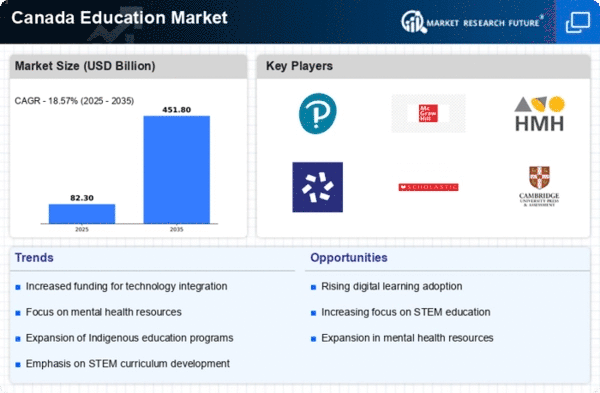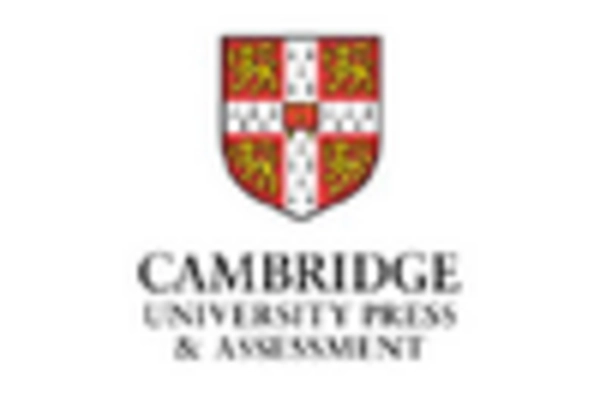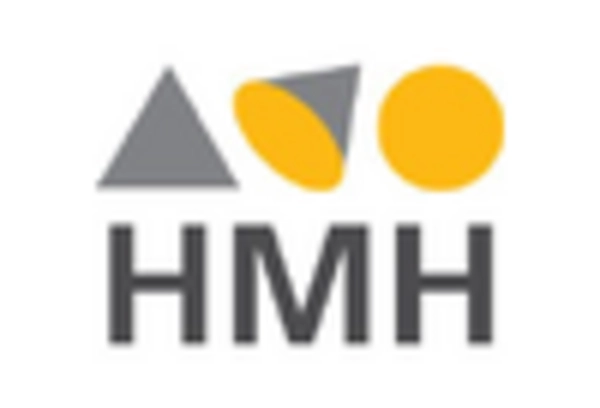Emphasis on STEM Education
The government education market in Canada is witnessing a pronounced emphasis on Science, Technology, Engineering, and Mathematics (STEM) education. This focus is driven by the recognition of the critical role that STEM skills play in the modern economy. In 2023, approximately 30% of high school graduates pursued STEM-related fields in post-secondary education, indicating a growing interest among students. The government has initiated various programs aimed at promoting STEM education, including funding for specialized training and resources for teachers. This strategic emphasis is likely to enhance the skill set of future generations, aligning educational outcomes with labor market demands. Consequently, the government education market is adapting to these trends, potentially leading to a more skilled workforce that can contribute to Canada's economic growth.
Increased Government Funding
The government education market in Canada is experiencing a notable increase in funding allocations. In recent years, provincial and federal governments have recognized the necessity of investing in education to enhance learning outcomes. For instance, the total expenditure on public elementary and secondary education reached approximately $50 billion in 2023, reflecting a growth of around 5% from the previous year. This influx of financial resources is likely to facilitate the implementation of innovative teaching methods and the integration of technology in classrooms. Furthermore, increased funding may also support the development of infrastructure, ensuring that educational institutions are equipped to meet modern standards. As a result, the government education market is poised for growth, driven by enhanced financial support aimed at improving educational quality and accessibility.
Focus on Indigenous Education
The government education market in Canada is placing a heightened focus on Indigenous education, reflecting a commitment to reconciliation and inclusivity. Educational authorities are increasingly recognizing the importance of incorporating Indigenous perspectives and knowledge into curricula. In 2023, approximately 15% of schools reported offering specialized programs aimed at Indigenous students, which may include culturally relevant teaching methods and resources. This focus is likely to enhance educational experiences for Indigenous learners, fostering a sense of belonging and identity. Furthermore, the government education market is expected to continue evolving in this area, as initiatives aimed at improving educational outcomes for Indigenous populations gain momentum. This shift may contribute to a more equitable education system that respects and values diverse cultural backgrounds.
Adoption of Hybrid Learning Models
The government education market in Canada is increasingly adopting hybrid learning models, which combine traditional classroom instruction with online learning components. This approach appears to be gaining traction as educational institutions seek to enhance flexibility and accessibility for students. In 2023, approximately 25% of schools reported implementing hybrid learning strategies, allowing students to benefit from both in-person and remote education. This model not only accommodates diverse learning styles but also addresses geographical barriers, enabling students in remote areas to access quality education. The government education market is likely to continue evolving in this direction, as stakeholders recognize the potential of hybrid models to improve educational outcomes and cater to a broader range of student needs.
Integration of Mental Health Initiatives
The government education market in Canada is increasingly integrating mental health initiatives into educational frameworks. Recognizing the importance of mental well-being for academic success, educational authorities are implementing programs aimed at supporting students' mental health. In 2023, approximately 40% of schools reported having mental health resources available for students, reflecting a growing awareness of this issue. These initiatives may include counseling services, workshops, and training for educators to identify and address mental health concerns. By prioritizing mental health, the government education market is likely to foster a more supportive learning environment, which could lead to improved student engagement and academic performance. This shift indicates a broader understanding of the holistic needs of students within the educational system.

















Leave a Comment